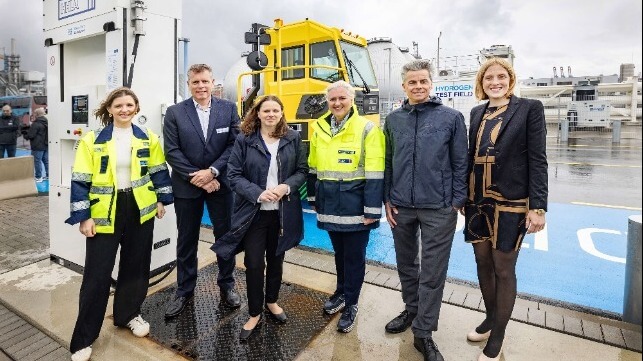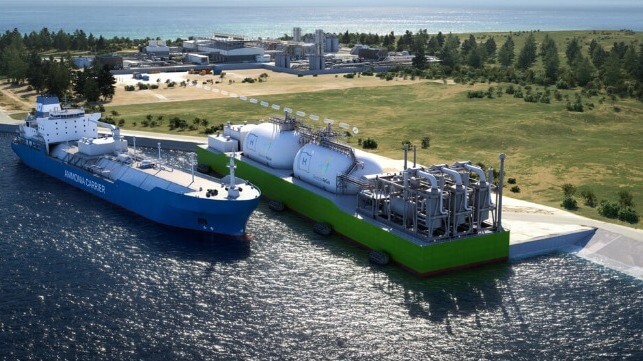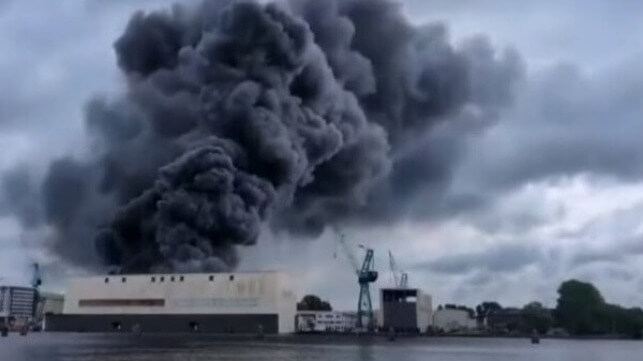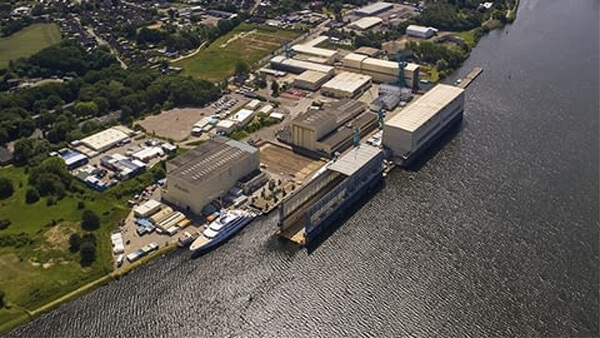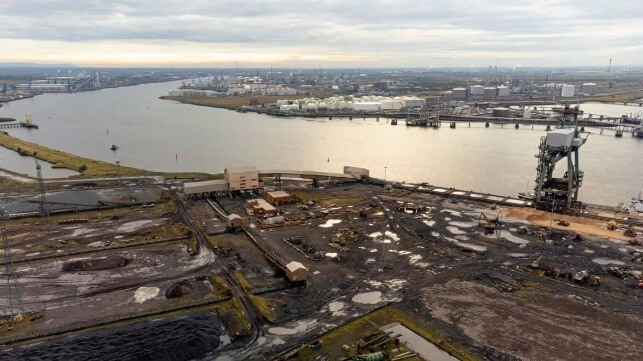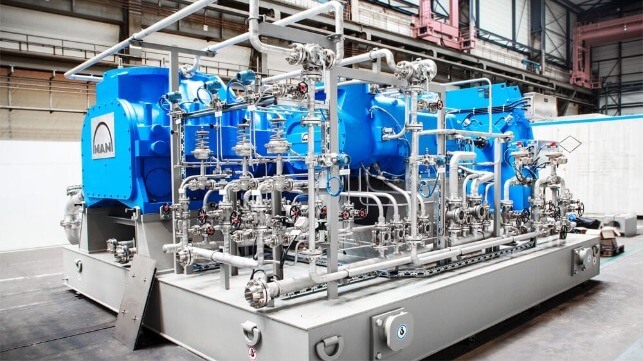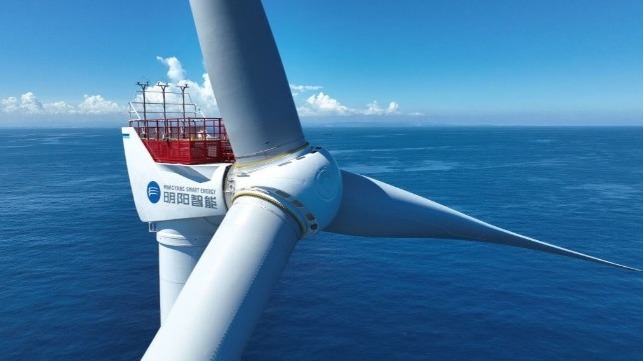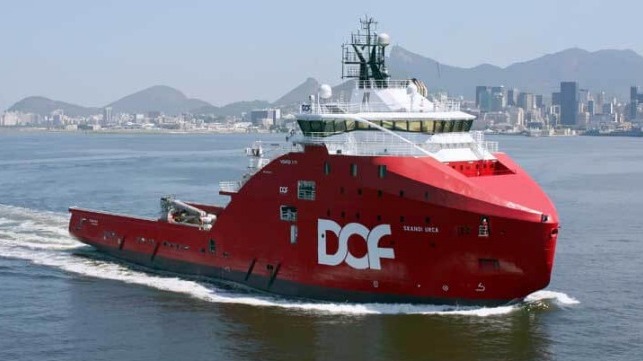Ports Call for U.S. to Delay 25% Tariff on Chinese Manufactured STS Cranes
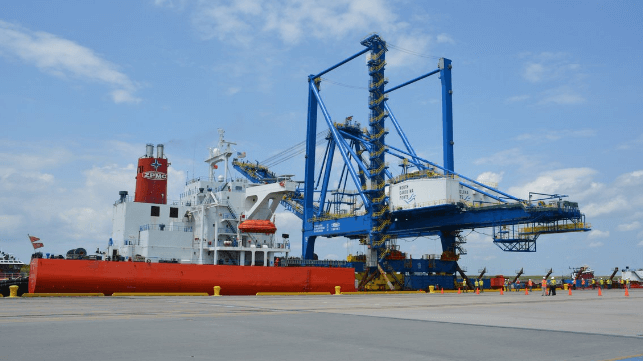
America’s port community is pushing back on a plan by the Biden Administration to impose a 25 percent tariff on Chinese manufactured port cranes coming into the United States. It is the latest step in a politically charged issue that began over a year ago with accusations that the Chinese cranes were spying on American ports and could be controlled from overseas.
The Biden administration in February launched an initiative to increase port security in response to the accusations of spying and the near total monopoly of the market by Shanghai Zhenhau Heavy Industries (ZPMC) which claims 80 percent of the worldwide market for large container cranes. In the latest step, the U.S. Trade Representative Ambassador Katherine Tai announced plans to raise the tariff on ship-to-shore cranes to 25 percent effective August 1. It was part of a larger widescale range of tariff increases proposed for everything from electric cars to semiconductors, steel, battery and solar equipment, and on to medical gloves and synergies.
The American Association of Port Authorities released its response letter provided during the commentary period for the tariffs emphasizing the potential danger and negative financial impact since there are no domestic alternatives available. They highlight that despite the administration’s efforts to reshore crane manufacturing it will be years before a competitor will be available.
Cary Davis, AAPA’s president and CEO asserts the tariff “will not meet its stated objective.” The association points to the potential for negative outcomes highlighting the harm to port efficiency and capacity, strained supply chains, increased consumer prices, and a weakened U.S. economy.
At least seven U.S. ports they said currently have 35 STS cranes on order from Chinese manufacturers. All these orders were signed before the tariff was announced. AAPA calculates that the tariff will cost the ports an additional $131 million in new and unexpected costs. AAPA is collecting data on anticipated future purchases and reports it has already learned of plans to buy at least 61 additional STS cranes.
AAPA is calling on the U.S. Trade Representative to delay the implementation of the increased tariff at least until a domestic manufacturer is able to provide an alternative. They warn ports could be forced to cut back on their investments if they have to pay the tariff.
To aid with the development of the industry, AAPA reports it launched a survey of ports and terminal operators. They are working to compile data on the plans for crane investments over the next five and 10 years. The data they said will help manufacturers to determine the opportunities in the market.
Charleston Takes Steps to Clear Backlog by Pausing Construction
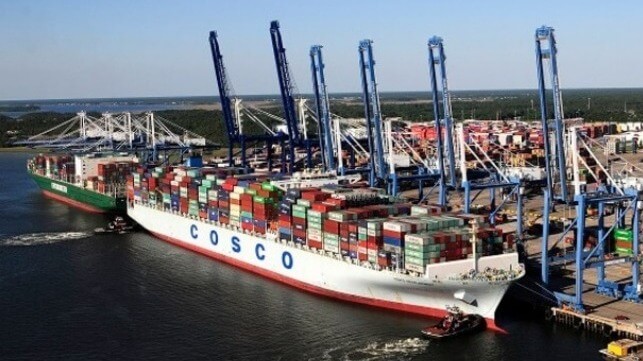
After reports of persistent backlogs and congestion at the Port of Charleston, port officials highlight they are taking steps to reduce the frustrations. The goal is to temporarily pause the current construction at the container terminal to clear the backlog before proceeding.
SC Ports says it has been working through a ship backlog, following a two-day software issue in May and ongoing berth impacts at the Wando Welch Terminal related to toe wall construction along the wharf to maintain a 54-foot berth depth. After the port reopened from the shutdown due to the software problem as many as 20 ships were waiting. At the end of May, 10 days after a two-day shutdown due to a software problem, there were a dozen or more containerships still waiting offshore as the port continued to work through its backlog while also servicing incoming vessels. By late June, the backlog was down to seven ships.
Contributing to the challenges, in March construction began on the toe wall at the Welch terminal. They are installing steel sheets along the wharf. For most of the spring, the terminal was able to accommodate three ships, but as the project progressed, they closed one of the three berths causing longer wait times for vessels.
Beginning July 3, SC Ports will pause work on the toe wall project to open all three berths at the Wando Welch Terminal. They reported that the backlog had been reduced to three ships at anchor but now they want to clear the wait so that the port can handle ships as they arrive.
The pause will last for two weeks until July 14 by which time they expect to handle ships as they arrive. When the work resumes, they expect an average 48-hour wait. This will continue until the late fall when they expect all three berths will reopen. The construction project is slated to run till March 2025, but the latest phases will not impact the berths.
Port of Chancay Creates New Competition in Latin America
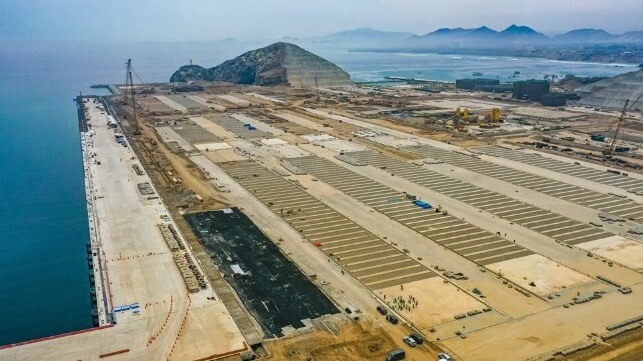
According to Peru's Ministry of Transport and Communications (MTC), the construction of the new Port of Chancay is 80 percent complete and will be inaugurated in November, likely in the presence of Chinese President Xi Jinping. The launch of the Port of Chancay will strengthen Peru's maritime infrastructure on the Pacific coast, allowing transshipment of cargo to Chile, Colombia, Ecuador and Panama.
The main advantage of this new infrastructure will be the reduction of time and costs of the current maritime trade on the Pacific Coast, where, for the first time, Ultra Large Container ships with a capacity of 18,000 TEU will be able to dock. The transfer time of containers between Peru and China will be reduced from 35 to 23 days, which means a reduction in transportation costs of 30 percent. This cost reduction will be used by other countries such as Brazil, Uruguay, Paraguay and Bolivia to import and export their products. The Port of Chancay will allow companies to send cargo in these ships directly to China, instead of using smaller ships, which today must first go to Mexico or California, as is currently the case. The Lima Chamber of Commerce (CCL) projects that in the first phase, the Port of Chancay will handle between 30 and 40 percent of the national cargo destined for China and Southeast Asia.
Alongside the seaport, Peru’s Ministry of Economy and Finance has long been working on the creation of a Special Economic Zone (SEZ) with the aim of attracting large manufacturers. The goods from this zone will be distributed from Chancay to other Latin American countries. With the port of Chancay, Peru will have a strong impact at regional level, starting with Chile, Ecuador, Colombia and even Brazil, if it manages to integrate with the industrial zone in the inland city of Manaus.
The economic impact will be greatest for Chile, because Peru will be able to receive Post Panamaxes and Ultra Large Container Vessels (ULCVs), which do not have practical operational possibilities in other ports in the region. Chilean ports are too small for these larger, more efficient vessels, and as a consequence will become less competitive in trade with Asian markets.
As the inauguration date approaches, questions have arisen as to whether the construction of the Port of Chancay, where 60% of the shares belong to Cosco Shipping, is a project that brings only benefits to Latin America. Last week, the Peruvian ambassador Alfredo Ferrero presented American investors with an option to build the mega-port of Corio, a proposed site located in the coastal region of Arequipa, which requires an investment of $7 billion. The intention in soliciting American investment is to balance Chinese interests in the region – though the United States could also invest in a mega-port in Chile rather than in Peru.
The opinions expressed herein are the author's and not necessarily those of The Maritime Executive.
Port officials highlight other interim steps including a flexibility to handle vessels at either Wando Welch or the North Charleston Terminal. Last week, they also reported the port and the International Longshore Union agreed to a framework for the future staffing of the port which will permit operations at the new Hugh K. Leatherman Terminal. The new terminal has largely been idle since it was completed due to the labor issues. Currently, only the MSC Michigan VII, the vessel that made the high speed exit from Charleston, is detained at the terminal while carriers have declined to dock at the terminal until the labor issues were resolved.
The port also highlights the flexibility of the carriers and new programs such as a virtual queue and flexible start times all designed to improve fluidity and reduce vessel waits.

